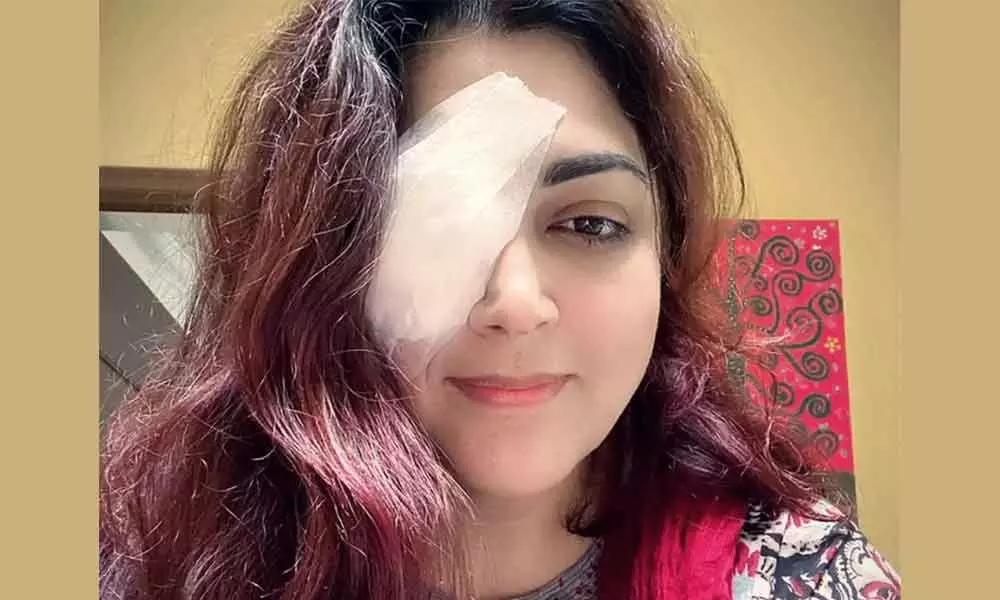What Is a Cataract?
A cataract is a dense, cloudy area that forms in the lens of the eye. A cataract begins when proteins in the eye form clumps that prevent the lens from sending clear images to the retina. The retina works by converting the light that comes through the lens into signals. It sends the signals to the optic nerve, which carries them to the brain.
It develops slowly and eventually interferes with your vision. You might end up with cataracts in both eyes, but they usually don’t form at the same time. Cataracts are common in older people. Over half of people in the United States have cataracts or have undergone cataract surgery by the time they’re 80 years old, according to the National Eye InstituteTrusted Source.
Symptoms of Cataracts
Common symptoms of cataracts include:
- blurry vision
- trouble seeing at night
- seeing colors as faded
- increased sensitivity to glare
- halos surrounding lights
- double vision in the affected eye
- a need for frequent changes in prescription glasses
Cataract surgery is an operation to remove your eye’s lens when it is cloudy. The purpose of your lens is to bend (refract) light rays that come into the eye to help you see. Your own lens should be clear, but with a cataract it is cloudy. Having a cataract can be like looking through a foggy or dusty car windshield. Things may look blurry, hazy or less colorful.
The only way to remove a cataract is with surgery. Your ophthalmologist will recommend removing a cataract when it keeps you from doing things you want or need to do.
During cataract surgery, your cloudy natural lens is removed and replaced with a clear artificial lens. That lens is called an intraocular lens (IOL). Your ophthalmologist will talk with you about IOLs and how they work.
What to Expect with Cataract Surgery
Before surgery: Your surgeon will measure your eye to determine the proper focusing power for your IOL. Also, you will be asked about any medicines you take. You might be asked not to take some of these medicines before surgery.
You may be prescribed eye-drop medicines to start before surgery. These medicines help prevent infection and reduce swelling during and after surgery.
The day of surgery: Your ophthalmologist may ask you not to eat any solid food at least 6 hours before your surgery.
Cataract removal surgery may be done in an outpatient surgery center or in a hospital. Here is what will happen:
- Your eye will be numbed with eye drops or with an injection around the eye. You may also be given a medicine to help you relax.
- You will be awake during surgery. You may see light and movement during the procedure, but you will not see what the doctor is doing to your eye.
- Your surgeon looks through a special microscope. She creates tiny incisions (cuts, created by blade or a laser ) near the edge of your cornea. The surgeon uses these incisions to reach the lens in your eye. Using very small instruments, he or she will break up the lens with the cataract and remove it. Then she puts your new lens into place.
Usually your surgeon will not need to stitch the incisions closed. These “self sealing” incisions will close by themselves over time. A shield will be placed over your eye to protect it while you heal from surgery. You will rest in a recovery area for about 15–30 minutes. Then you will be ready to go home.
Showering And Washing Hair After Cataract Surgery
You can shower after a cataract surgery, however, you should avoid exposing your eye to direct water contact for at least 7 days after the cataract surgery. Also avoid rubbing the eyes for one week, and excessive rubbing can cause other problems. Some tenderness and mild watery after surgery is normal and will settle in time.
Doctors recommend that you wait for at least two days after surgery before washing your hair. It is best to wait two weeks until returning to swimming.
How Long Does It Take To Recover From Cataract Surgery?
Days or weeks after surgery:
- You may have to use eye drops after surgery. Be sure to follow your doctor’s directions for using these drops.
- Avoid getting soap or water directly in the eye.
- Do not rub or press on your eye. Your ophthalmologist may ask you to wear eyeglasses or a shield to protect your eye.
- You will need to wear a protective eye shield when you sleep.
Your ophthalmologist will talk with you about how active you can be soon after surgery. He or she will tell you when you can safely exercise, drive or do other activities again.
When can I drive my car after cataract surgery?
Once your vision is back within the legal requirements for driving in your country, and you feel confident, you can return to driving.
When can I dye my hair?
Generally, we recommend waiting one week after cataract surgery before you dye your hair.
When can I wear eye make-up?
One week after each eye cataract surgery.
I use lubrication drops, when do I need to stop them, and can I return to them?
Any pre-existing dry eye symptoms will be present after cataract surgery. The medicated eye drops used offer some lubrication, however, you can use your normal lubrication drops between the doses, and as often as necessary after the eye heals.
Will my cataracts grow back?
No, but sometimes a membrane can grow behind the new lens and affect the vision.
Sometimes I see floaters in my vision, is this normal?
Floaters are a common situation both before and after cataract surgery. They can be more prominent after cataract surgery when more light enters the eye.
I feel like there is a shadow at the side of my vision?
A common effect of having a new lens placed in the eye is what we call the “edge effect”. The new lens implanted into the eye is slightly smaller than the human lens. In certain conditions light will reflect off the edge of this new smaller lens causing a shadow or blinker effect. This tends to resolve slowly over time as the brain reprograms to the new lens.





